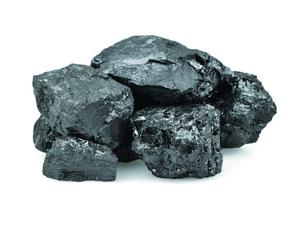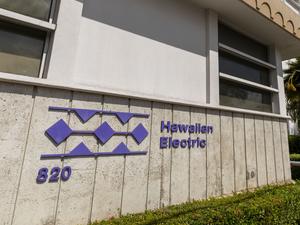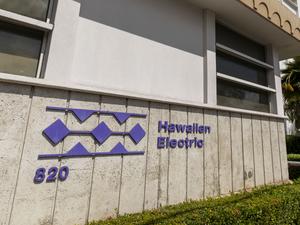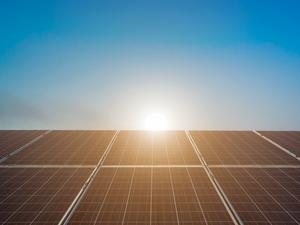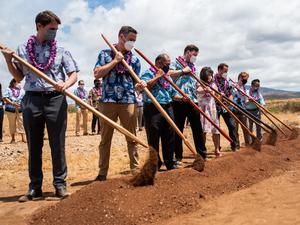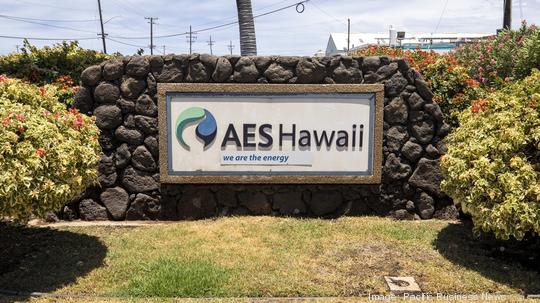
What, if anything, should be done with AES Corp.’s plant in West Oahu once its coal burning days are over as of September 2022?
It’s a pressing question for elected officials and stakeholders, who are of different opinions on whether the Barbers Point facility and its 180 megawatts of generating capacity should be allowed to retire, or be converted into biomass power — a firm renewable form of energy from burning wood, but one that has generated controversy, in part because it still involves releasing carbon emissions.
The plant is slated to go offline about a year from now as the state transitions off of coal, but wind and solar renewable energy projects that were planned to replace it have lagged behind schedule.
AES previously looked at a biomass conversion option in 2018, and recently did so again at the behest of Scott Glenn of the Hawaii State Energy Office, AES Hawaii told the Public Utilities Commission and other stakeholders in a June 21 meeting.
Essentially, the 180 megawatts would be replaced by burning wood pellets that would be imported until designated forests could be grown and harvested — possibly several years down the line — or until other forms of renewable power take over.
Last Wednesday, the Hawaii Natural Energy Institute and Telos Energy gave a presentation to eight state senators of the Senate Committee on Ways and Means and the Committee on Energy, Economic Development and Tourism.
Among the findings presented by HNEI’s Rick Rocheleau and Telos’ Derek Stenclik was that the biomass conversion would provide a 20% increase in the state’s renewable portfolio standard, with the energy generated the equivalent of 4,000 to 5,000 acres of utility-scale solar, or 180,000 household rooftops.
However, HNEI also said in its presentation that converting to biomass would cause an increase of $3 per month on Oahu ratepayers’ bills at current oil prices. Should oil prices increase in the future, biomass could be a cheaper option.
Sens. Glenn Wakai and Donovan Dela Cruz expressed interest in the possibility of biomass as a near-term firm power solution compared to intermittent energy sources like wind and solar, and raised the possibility of prodding the PUC with legislation in next year’s session. But Rep. Nicole Lowen, the house chair of the Committee on Energy and Environment, was skeptical on biomass — she's dealt with that with the embattled Hu Honua project on Hawaii Island — and about taking initiative from the PUC.
PBN gathered comment from many of the key players and decision makers related to the AES plant and where it may be headed next.
Jay Griffin, Hawaii Public Utilities Commission chair
The Commission has previously approved a portfolio of renewable energy projects, including firm resources like waste-to-energy, geothermal, and biofuels. Hawaiian Electric’s long-term plans, which are currently being updated, are expected to include a mix of renewable technologies for each island going forward.
If the Commission receives an application from Hawaiian Electric for a biomass conversion of the AES plant, it would be carefully evaluated with an eye toward the costs to customers, including potential greenhouse gas emissions, grid reliability impacts of the project, and comparison to other alternatives.
Scott Glenn, Hawaii State Energy Office chief energy officer
We need to look at the entire energy picture for each island — electricity and transportation, as well as how energy can support overall economic development. When thinking about large investments such as converting a coal plant to biomass, we should look to how we can address as many of our overall goals as we can.
Every project has tradeoffs and costs that must be weighed. There may be better ways to reduce carbon emissions and ratepayer costs, especially with rapid technology advancements; there are practical aspects of implementation, including timeframes and regulatory and environmental requirements; what is the relative value compared to smaller, more distributed energy sources that improve island resilience; and what is the opportunity cost and overall value of the investment.
Hawaiian Electric Co.
We have always advocated for a diverse portfolio of generation resources — wind, solar, storage and firm renewable energy sources like biomass and biofuels that provide resilience and reliability.
These are very preliminary discussions and as HNEI points out, there are a lot of factors that were outside the scope of their report. Any consideration of converting the coal plant to biomass needs to start with a more holistic resource study, which we’re doing as part of our integrated grid planning (IGP) process. That process involves dozens of stakeholders — including HNEI — and looks at customer cost, reliability, fuel supply chain security, greenhouse gas emissions and other factors.
Sen. Glenn Wakai, chair of Senate Committee on Economic Development, Tourism, and Technology
I really think we should be talking about conversion, rather than decommissioning that coal plant. … There’s so much sunken cost there. For us to build a future biomass facility would be extraordinarily expensive, and take a heck of a lot of time to do.
We’re never going to find a perfect renewable. Until man finds a way to make energy out of air, we’re not going to get 100% on any proposed green energy source. So from a lawmaking perspective, we need an array of sources in our portfolio. A little bit of this, that, and something else, rather than what we have now ... just infighting. The battery guys want to own it, the solar guys want to own it, the wind guys want to own Hawaii’s [renewable portfolio standard]. It cannot be 100% intermittent.
[Biomass conversion of AES] could happen tomorrow. It really just is the PUC saying, "this could make sense," and we’re going to line up the [power purchase agreement] to achieve this conversion. But if the PUC decides that either, one, they’re not going to do it, or two, playing the slow hand on it, then lawmakers in January are going to see what it’s really going to take to move this discussion along.
Sen. Donovan Dela Cruz, chair of Senate Committee on Ways and Means
Ways and Means has been going to the different counties and looking at changes to our energy policy. One of our biggest concerns is we do not have a required amount of firm energy in our portfolio. ... When you look at [Kauai Island Utility Cooperative's] forecasting, they have a high amount of firm energy in their portfolio. It concerns me that each county doesn’t have a similar planning document like KIUC ensuring we have a required amount of firm [power].
I see the HNEI [presentation] helping us get closer to what I hope we can achieve. … I don’t know why it’s never been done like that. I’m shocked, to tell you the truth, that we don’t have a more methodical way of achieving our goals. It’s too reactive and too organic.
What we often find is solar going to war with agriculture on land use, so we have to figure out how our state priorities can coexist or create synergy instead of create conflict, and it has to be done proactivity.
We've got to do what’s best for Hawaii. We can’t do what’s best for each individual participant in the whole energy discussion. It’s going to be uncomfortable for all of us to achieve a greater vision for Hawaii.
Rep. Nicole Lowen, chair of House Committee on Energy and Environment
I do understand the push to take this piece of infrastructure and do something useful with it, as opposed to doing nothing with it. But we also can’t try to force a square peg into a round hole; it has to make sense. That’s why the PUC is there, to balance all the factors. They’ve done a good job of doing that. … That’s my fundamental take on it.
[On biomass' purported carbon neutrality], at least for Hu Honua, there’s analysis being done. ... There’s different ways to think about it. Replanting trees does sequester carbon, but ... trees take time to grow. There’s a time lapse there that does matter. The carbon that is being emitted today [from biomass] is not being sequestered today, especially not if it’s a new project.
It is pretty clear that the emissions for biomass are probably less than coal or oil, but also if we have other available alternatives that are much better, and cheaper, then again, why try to force the square peg in the round hole?
Sandra Larsen, AES Hawaii market business leader
AES has provided reliable, low-cost energy to Hawaii for more than 25 years, and we are continuing that legacy with new renewable energy projects that harness the sun and wind to power the state. We look forward to continuing to contribute to the state’s goal of 100% renewable energy.
The HNEI report analyzing the impacts of converting our facility to biomass fuel showed multiple benefits including providing a cost-effective, dispatchable renewable energy source that is available to meet fluctuations in generation and customer demand, and enhance grid reliability. The timeframe is short to more fully evaluate and realize such benefits...
Murray Clay, Ulupono Initiative president
The possibility of converting the coal-fired AES Hawaii Power Plant to a biomass electrical power facility is worthy of consideration, but the details matter. Key factors include understanding the likely impact to the cost of electricity, the source of the biomass fuel, anticipated greenhouse gas emissions, local economic benefits, and the length of the power purchase agreement — whether it’s a short- or long-term commitment. Other important factors include any related, enforceable commitments, ranging from tree replanting to legitimate offsets, that would need to be evaluated by the PUC before moving forward.
Jeff Mikulina, Blue Planet Foundation outgoing executive director
We appreciate that the Senate is exploring every opportunity to accelerate our clean energy future. It is beyond time to retire coal in Hawaii, and we understand the instinct to repurpose the existing power plant for renewable energy. That said, it is difficult to imagine a future where this makes any sense.
If the goal is to minimize the land footprint of our energy sources, biomass is the worst choice. We'd need upwards of 300,000 dedicated acres of forest to feed the AES facility [without imports] — about 75% of Oahu (~380,000 acres). Director Rocheleau said as much at 1:17 in the video. That's 60 [times] as much land as would be needed for solar for a comparable amount of energy (5,000 acres, as was stated in the briefing).
Bottom line: We're not going to burn our way to a stable climate. We should instead redouble our efforts to deploy low-cost, abundant, and reliable local sources of power that don't pour carbon into our atmosphere.
Marco Mangelsdorf, responsible managing employee of ProVision Solar
Convert the AES plant to combust “biomass”? Switch from burning one [greenhouse gas]-producing fuel to another? This is madness.
